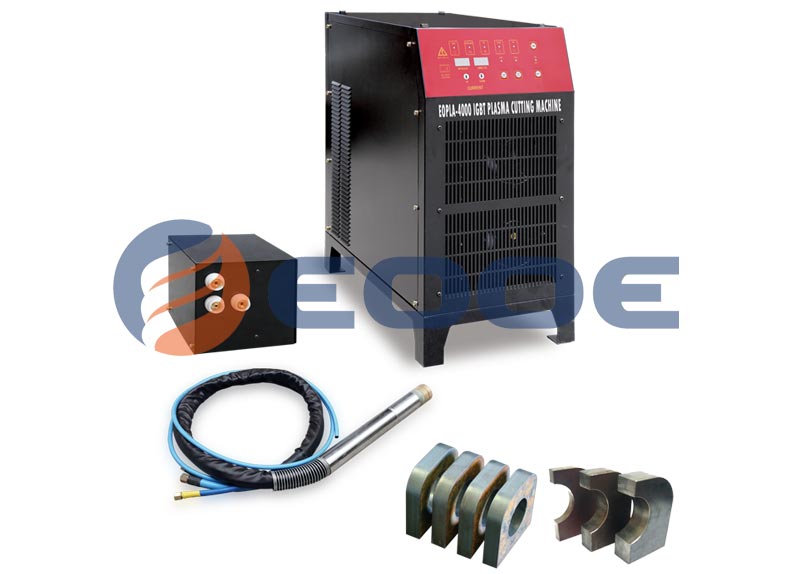
Fast cutting speed
Wide range of material and thickness
Low consumable costs
Narrow cutting kerf
Available for plasma gouging
Cutting torch self-cooling system
Protection for over heat, over pressure
Demonstration Video On Youtube
I. Introduction
Plasma cutting (plasma arc cutting) is a melting process in which a jet of ionised gas at temperatures above 20,000°C is used to melt and expel material from the cut. During the process, an electric arc is struck between an electrode (cathode) and the workpiece (anode). The electrode is recessed in a water- or air-cooled gas nozzle which constricts the arc causing the narrow, high temperature, high velocity plasma jet to form.
Plasma arc can cut a very wide range of electrically conductive alloys including plain carbon and stainless steels, aluminium and its alloys, nickel alloys and titanium. The method was originally developed to cut materials which could not be satisfactorily cut by the oxy-fuel process. Normally, the component or sheet to be cut remains stationary and the plasma torch is moved. Additionally, because the cost of the plasma torch is low compared with the price of the manipulation equipment, it is common to fit several torches to a cutting table.
II. Specification
| Input Voltage | 3 – 50Hz, 380V |
| Rated Input Capacity | 110KVA |
| Rated Output Current | 400A |
| Rate Output Voltage | 260V |
| Rated Load Duration | 100% |
| Open-Circuit Voltage | 347VDC |
| Current Range | 50A – 400A |
| Machine Quality Cutting Thickness (Carbon Steel) | 8mm – 50mm |
| Edge Start Maximum Cutting Thickness (Carbon Steel) | 60mm |
| Plasma Air | Pressure Air |
| Working Air Pressure Range | 0.5 – 0.65 Mpa |
| Torch Cooling | Water Coolant |
| Arc Starting | High Pressure Noncontact Ignite Assistance Arc |
